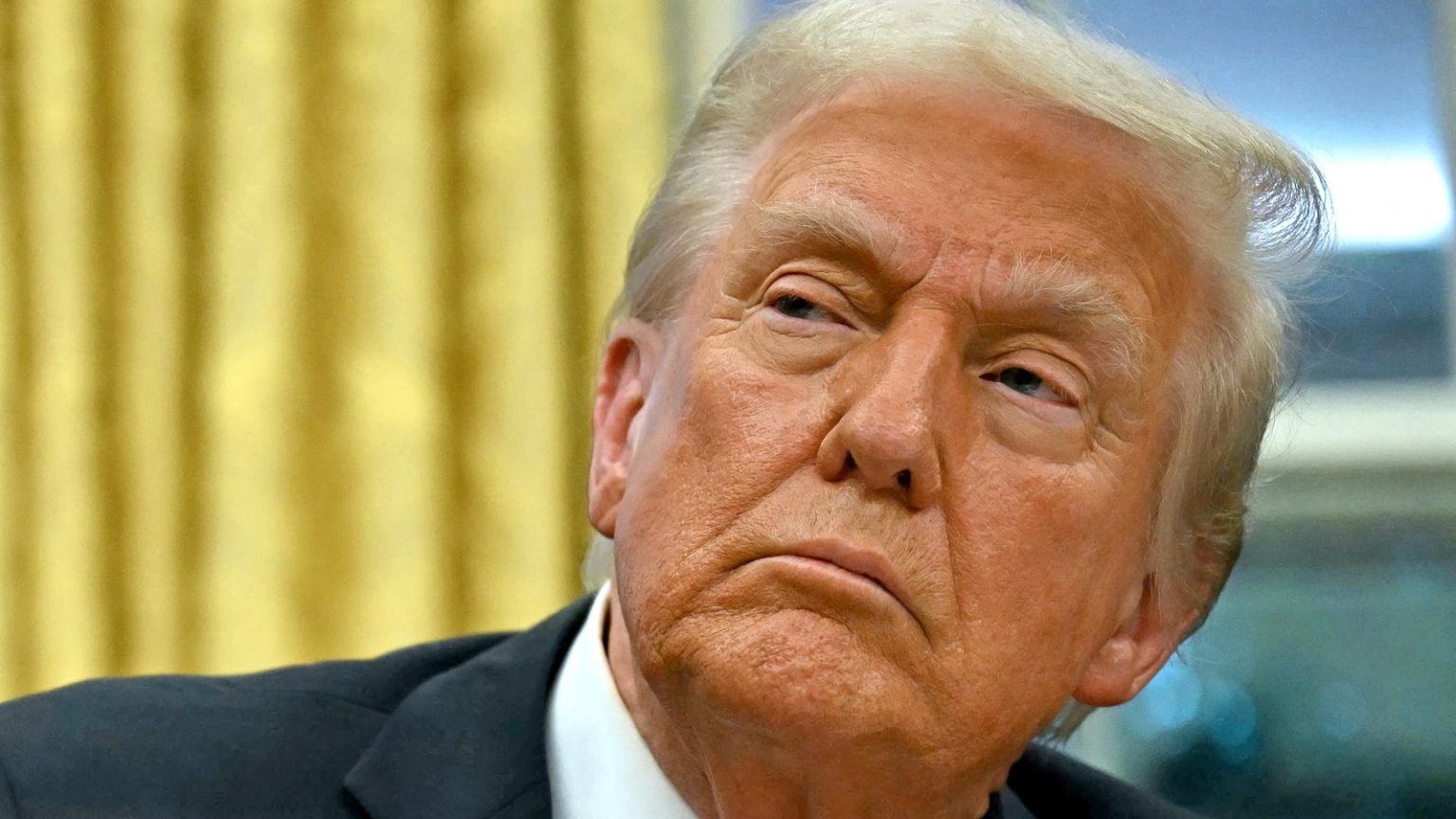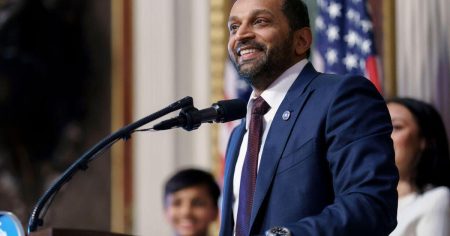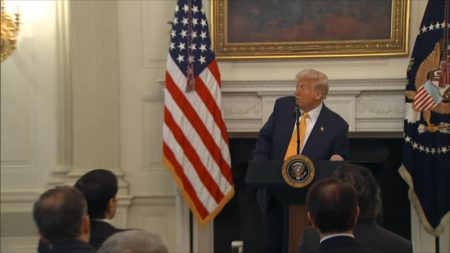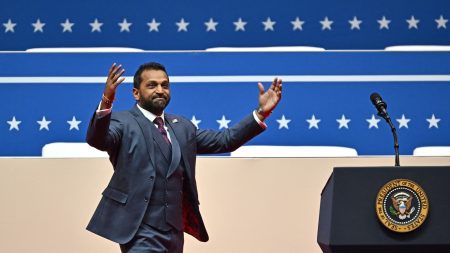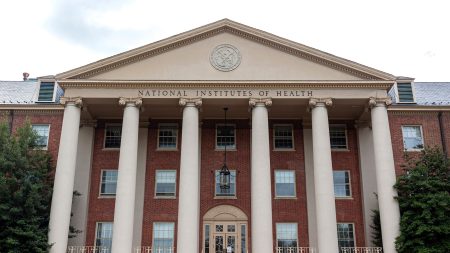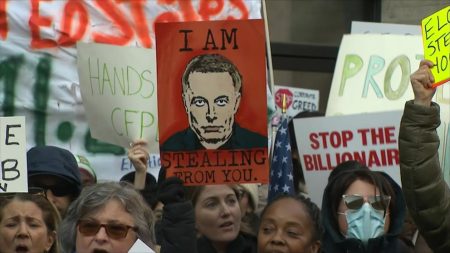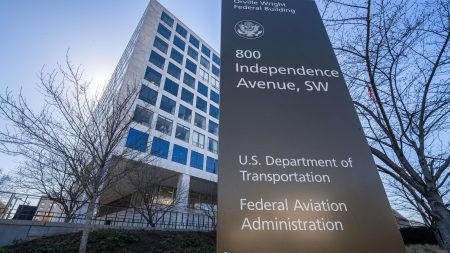A Federal Appeals Court Hands the Trump Administration a Significant Setback
On Tuesday, a federal appeals court delivered a notable blow to the Trump administration by denying its request to lift a lower court’s order that had blocked President Donald Trump from unilaterally freezing billions of dollars in federal funding. This decision marked the first time a federal appeals court has ruled against the Trump administration since the president took office three weeks ago. The case, heard by the 1st U.S. Circuit Court of Appeals, centered on whether the president could legally withhold funds allocated for loans, grants, and financial assistance without congressional approval.
The ruling came at a symbolic moment, as President Trump had just told ABC News’ Rachel Scott that he would "always abide by the courts." However, the administration’s legal team had sought an immediate administrative stay of the lower court’s temporary restraining order, which was rejected by the appellate panel. The three-judge panel, all of whom were nominated by Democratic presidents, deferred the matter back to the district court, asking for clarification on the scope of its earlier order. The judges emphasized that the Department of Justice (DOJ) had failed to provide sufficient legal authority to support its request for a stay, noting the "well-recognized uncertainty" surrounding the standards for issuing such a stay.
The Legal Battle Over Executive Power to Withhold Funding
The case began when the Trump administration attempted to freeze federal funding through a directive issued by the Office of Management and Budget (OMB). The directive, which has since been rescinded, was challenged in court by a coalition of 23 state attorneys general, who argued that the president’s actions violated the Constitution by overstepping the separation of powers. A federal judge in Rhode Island agreed, ruling that the administration had likely violated the Constitution by unilaterally blocking the funds.
In response, the DOJ argued that the district court’s decision amounted to an unprecedented overreach, as it required the executive branch to seek "preclearance" from the court before making any decisions about withholding funds. DOJ lawyers contended that this effectively gave the court control over federal spending, which they claimed was a violation of the Constitution’s separation of powers. They further argued that the district court’s order was "unworkable," as it would require federal agencies to seek permission from the court every time they wished to withhold funds based on their lawful authorities.
However, the appellate court was unmoved by these arguments, choosing instead to side with the district court and deny the administration’s request for an administrative stay. The court also noted that the DOJ had not adequately demonstrated how it had been harmed by the lower court’s order, a critical factor in determining whether to grant a stay. The judges made it clear that the decision was not a final ruling on the merits of the case but rather a procedural step, as the court will consider whether to issue a stay pending appeal later in the week.
The States Push Back Against the Administration’s Funding Freeze
The 23 state attorneys general leading the challenge against the Trump administration argued vigorously against allowing the funding freeze to proceed. They contended that the administration’s actions had already caused significant harm to millions of people who rely on federal funding for essential programs, ranging from healthcare and education to energy and infrastructure grants. The attorneys general described the policy as a "blanket freeze" that had "severe and destabilizing consequences" for their states and residents.
In their legal filings, the attorneys general also challenged the procedural propriety of the administration’s appeal. They argued that temporary restraining orders, like the one issued by the district court, are generally not stayed pending appeal, as they are intended to address urgent situations. Allowing the administration to resume its funding freeze, they warned, would immediately reopen the door to "sweeping and illegal policy" that would harm countless individuals and organizations dependent on federal funds.
Implications of the Court’s Decision
The appellate court’s decision to deny the administrative stay is a significant setback for the Trump administration, which has sought to assert broad executive authority over federal spending. While the ruling does not resolve the underlying constitutional questions, it signals that the courts are willing to place checks on the administration’s actions when they appear to exceed legal boundaries. The case highlights the ongoing tension between the executive branch and the judiciary, as well as the role of state governments in challenging federal overreach.
For now, the district court will have the opportunity to clarify its earlier order, particularly addressing the administration’s claim that it bars both the president and much of the federal government from withholding funds without prior court approval. The appellate court’s decision to defer to the district court for clarification suggests a cautious approach, as the judges seem reluctant to interfere with the lower court’s ruling without a fuller record. The case is likely to continue making its way through the courts, potentially setting precedents for future disputes over executive power and the separation of powers.
What’s Next in the Legal Fight
The Trump administration’s legal team has not yet indicated whether it will appeal the decision to the U.S. Supreme Court, though such a move is possible given the high stakes of the case. In the meantime, the appellate court has left open the possibility of issuing a stay pending appeal later in the week, which could still allow the administration to halt the funding temporarily while the case is resolved.
For the state attorneys general and the plaintiffs, the ruling is a provisional victory, but they recognize that the legal battle is far from over. They have vowed to continue fighting against the administration’s attempts to unilaterally withhold federal funds, arguing that such actions usurp congressional authority and harm vulnerable populations. As the case unfolds, it could have far-reaching implications for the balance of power between the executive and judicial branches, as well as for the millions of Americans who depend on federal funding for critical services.
The Broader Significance of the Case
Beyond the immediate legal dispute, this case reflects a broader struggle over the boundaries of executive power in the Trump era. The administration has repeatedly faced pushback from the courts when attempting to implement policies that appear to exceed its constitutional authority, from immigration restrictions to environmental regulations. This latest ruling underscores the judiciary’s role as a check on executive overreach, even as the administration continues to assert its authority in new and contested ways.
At the same time, the case highlights the importance of state attorneys general as a force for accountability in federal courts. The coalition of 23 states that brought this challenge demonstrates the willingness of state leaders to step in when they believe federal actions are harming their residents. As the legal drama continues to unfold, it will be worth watching how these dynamics shape the balance of power in Washington and beyond.
In the end, this case is about more than just funding—it’s about the rule of law, the separation of powers, and the limits of presidential authority. The outcome will have far-reaching consequences for how future administrations approach federal spending and the role of the courts in ensuring that executive actions align with constitutional principles.





